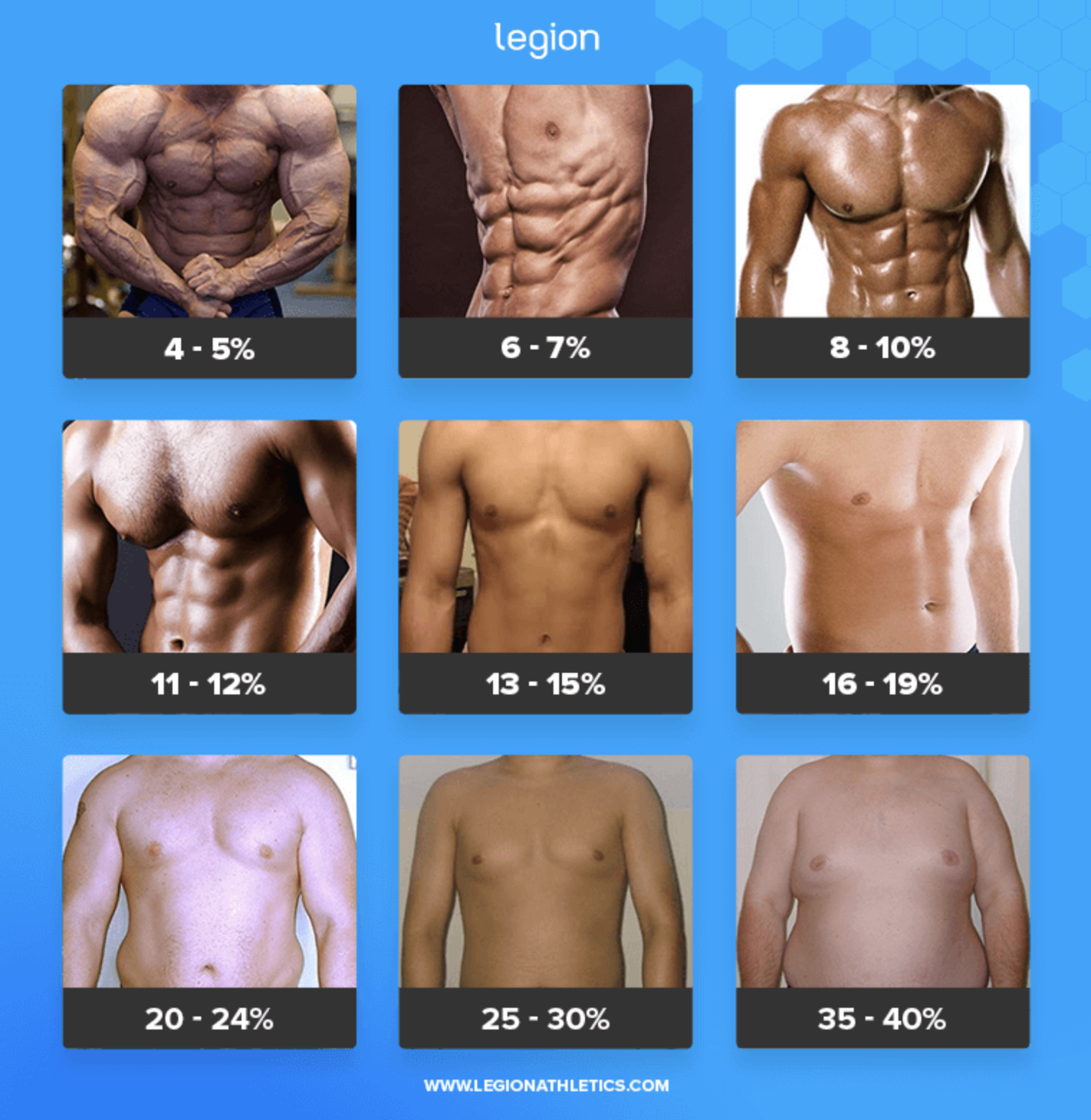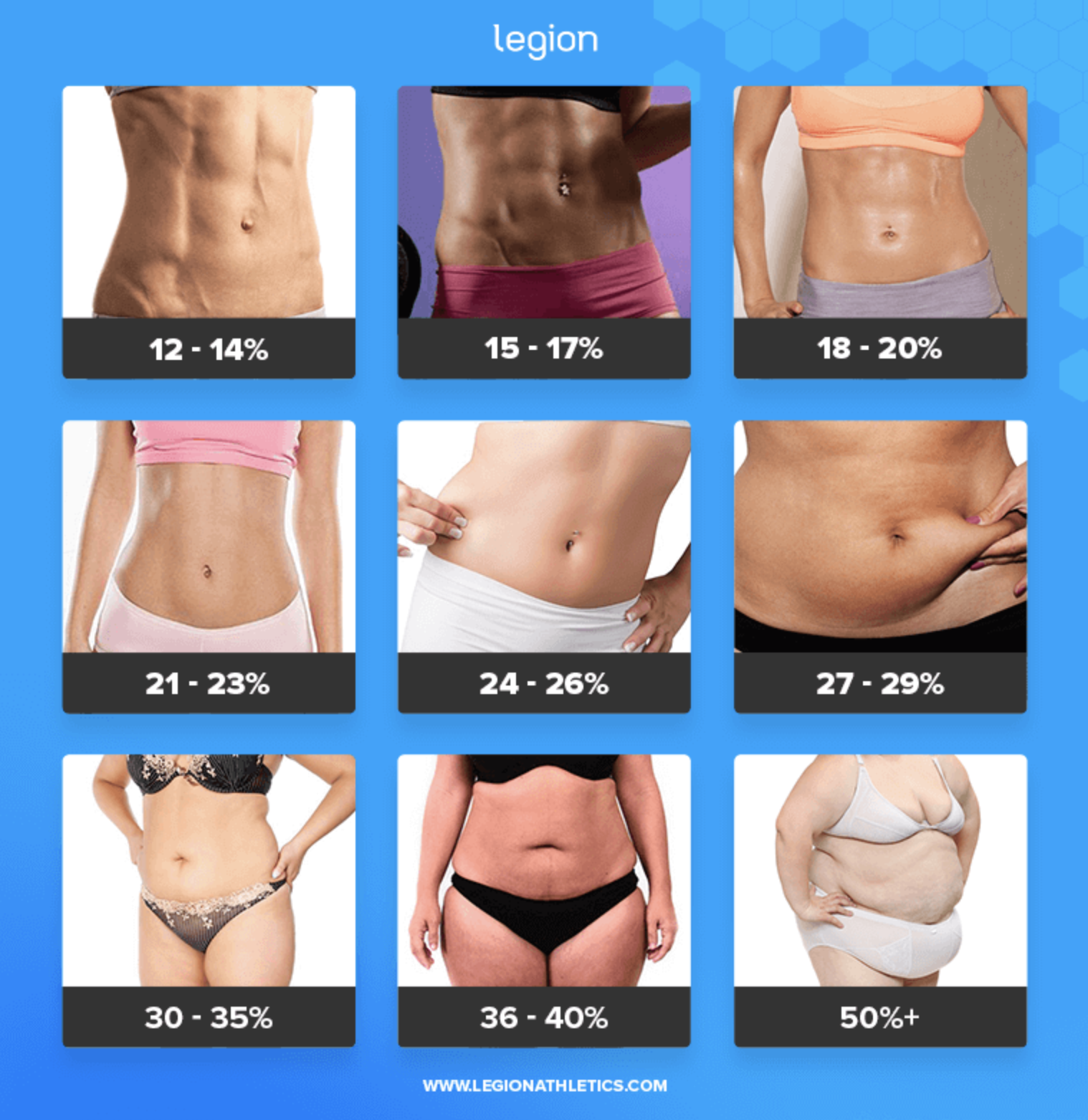As a general rule of thumb, the easiest and most common way to go about calculating your protein needs is simply to play by the "1g per Pound of Bodyweight Rule” - assuming you’re within striking distance of being somewhat lean.
But, also I know that there are plenty of analytically-minded people out there that might enjoy a slightly more mathematic approach, so I’ve thrown together three additional ways you could go about calculating your protein needs on a more granular level - the one common theme here being that these methods give greater consideration to this idea of your lean body mass (LBM) rather than your overall bodyweight.
What is lean body mass?
Although most people think of their LBM as just “how shredded you are underneath it all,” your lean body mass is actually the sum composition of all of your non-fat bodily structures including your muscles, bones, organs, tissues, and even water.
How do you measure lean body mass?
Well, if you want the most accurate number possible, you’d probably have to get what’s called a DEXA scan, which stands for dual energy x-ray absorptiometry.
But, don’t drown yourself in the alphabet soup.
All you need to know is that it’s a fancy machine that some high-level athletes and fitness influencers utilize from time to time to measure their body fat percentage and lean body mass.
But, this isn’t typically what “regular” people do (although you totally could).
Practically speaking, the best way to figure out your lean body mass is to crunch a few numbers based on your estimated body fat percentage, but we’ll explore that idea in more detail a bit later.
Now that we’ve defined a few terms, let’s get into the methodology of how you might calculate your protein based on your estimations of LBM.
The “Goal Weight Method”
The first method you could use to calculate your protein intake based on your LBM is to think about your LBM loosely as your goal weight if your goal is to lose body fat.
In other words, how much would you weigh if you were beach lean with visible abs?
To use myself as an example, I’m currently 185 pounds, but I know that getting beach lean would require me to be weighing in around 175 pounds.
That means my goal weight in this case would be 175 pounds, which takes the place of this LBM number in that it represents a very lean (but obviously not completely fat-free version of myself).
It’s “close enough” for our purposes - if you will.
In my case, it also helps to know that my driver’s license when I was a skinny 16 year-old soccer player listed me at a weight of 172 pounds, so I know that 175 is probably a decent number to aim for as a fat loss goal.
So, by this “calculation,” striving for a maximum of 175g of protein per day would be a pretty good idea based on what the whole of evidence-based research seems to indicate at the moment, which is that eating between 0.7-1.0g of protein per pound of LBM per day is a great way to optimize a lean physique.
One Important Stipulation
Note, however, that this method doesn’t apply if you are a leaner individual who is trying to gain weight. Why?
Because in this instance, your goal weight and your lean body mass would no longer be similar numbers.
In fact, they drift farther and farther apart as you gain both lean tissue and body fat in a gaining phase.
So, if you are already lean and your aim is to bulk up, it makes more sense to use your current bodyweight in pounds as your target protein intake (in grams per day).
And although some hypertrophy experts might encourage leaner individuals who are trying to mass to bump their protein intake to 1.2g of protein per pound of LBM, I personally think this is unnecessary.
The “True Lean Mass Method”
The second method actually requires you to do a bit of math using your estimated body fat percentage to identify your true lean body mass.
This method, however, can easily be overwhelming, so use it with caution.
Truthfully, I only recommend using it if you are the type of person that actually enjoys crunching numbers (which I personally do).
If that’s not you, you might consider skipping it altogether and sticking with The Goal Weight Method for the sake of simplicity.
Here’s how this one works: Being 185 pounds right now, my best estimate of my current body fat percentage is probably around 15%.
This is based on pictures and opinions of trusted friends, but I openly admit this is a bit of a fool’s errand.
Let me explain.
WHY EYEBALLING YOUR BODY FAT PERCENTAGE IS DIFFICULT
Body fat percentages are extremely difficult to eyeball because everyone holds their body fat in different ways.
Some people can appear leaner than they are while others can appear heavier than they are simply based on where how your fat is distributed across your body.
For example, some guys can sport a raging six-pack all the way up to 15% body fat while some guys have blurry tummies around 12%.
Similarly, some women can appear leaner or “look hotter” because they store their fat in the breasts and their bums instead of on their stomachs.
For a little visual help, I think the graphic you see here from Legion Athletics is the best graphic on the internet for this sort of thing.
Nonetheless, this method does a good-enough job of providing a ballpark estimate that you can adjust in practice as you see fit.
In practice, if my estimated body fat percentage is 18% right now, that means 82% of my body composition should (in theory) be lean body mass. Then we just do a little math to figure out what my lean body mass since we now have a decent guess of what my fat mass is.
185 pounds x 0.85 (as a percentage of estimated lean body mass) =
157.25 pounds of lean body mass
Right away, you can see that this number is quite a bit different from the number we got from The Goal Weight Method, and this is for good reason.
The first one is a real-life anticipation of what I might weigh if I lost all the body fat I want to lose, while the True Lean Mass Method is a prediction of what I’d weigh if I had no body fat at all (which is impossible).
So, by the True Lean Mass Method, I would be eating around 158g of protein at 185 pounds and an estimated body fat percentage of 15%.
Getting Cheeky with Your Manipulation of the True Lean Mass Formula
Interestingly enough, you could easily adjust that formula to reflect what you might weigh at any given “aesthetically pleasing” body fat percentage you might desire.
For example, in the physique space, people tend to consider that 6-8% body fat range (for men) to be the “golden zone” of looking pretty darn lean.
And for women, you can generally bump those numbers by 7-10 percentage points as a general rule.
Given that we’ve already got an equation in place that allows for the manipulation of body fat percentage, it’s easy to make a calculation that lands us specifically in that golden zone for looking like a movie star on the beach.
I call this the 8% Method.
The “8% Method”
If I wanted to set my sights specifically on being 8% body fat by the end of my fat loss phase, I would do the following:
185 pounds x (0.85 + 0.08) = 172 pounds of lean body mass
If you’re wondering how that equation works, let me break it down for you quickly.
The 0.85 figure represents my predicted LBM based on my estimation of being around 15% body fat.
100% - 15% = 85%, which is the LBM figure here.
Eighty-five percent reflected in decimal form is 0.85.
Now, to add back that 8%, we simply adjust the decimal from 0.85 up to 0.93 by adding the 0.08, which leaves us with the configuration you see above.
And that’s that! You get an estimation of being 172 pounds at 8% body fat.
You could, of course, do this calculation based on any desired body fat percentage. Here, 8% just functions as a common example of what would leave most men looking pretty diced.
And, if you wanted to bring all of this information back around to protein intake, our calculations from the 8% Method would have me eating around 172g of protein per day at 185 pounds.
Let’s wrap it up.
We’ve now got three numbers here to compare.
The “Goal Weight Method” – 175 pounds of lean body mass
The “True Lean Mass Method” – 157 pounds of lean body mass
The “8% Method” – 172 pounds of lean body mass
Which one do we pick then?
For the sake of keeping things simple, I would just aim to consume between 157-175g of protein per day since it reflects the range of all three of these calculations.
In fact, this is exactly what I do.
One Last Disclaimer
Remember, however, that all of this protein talk still assumes a proper training program for hypertrophy – we’re just not discussing the training piece of the physique puzzle at this time because our focus is on daily protein intake.
Apart from brilliant genetics, you can’t only eat protein and “get jacked” without working out to initiate the growth. If you can, congratulations! You are a genetic anomaly.
Curious about the training portion of how all this works?
Skip on over to this article about seven simple rules of thumb when it comes to training for maximal muscle growth.
“HOW DO I EAT THIS MUCH PROTEIN?”
Ah, yes! The next logical question as we think about the big picture of building muscle…
Fortunately, I’ve got you covered with a list of 9 Sneaky Ways to Get More Protein Into Your Diet.
So check that out and get to eating!
Thanks for reading, everyone! I sincerely hope you enjoyed the content and learned something.
If you feel like this blog brought you any value at all, consider sending it to a friend or family member!
And, if you're interested in working with me one-on-one, visit The Vegan Gym and apply for coaching. I’ve had nothing but success in guiding people toward their fat loss goals.
Cheers, everyone!
-Andrew
















